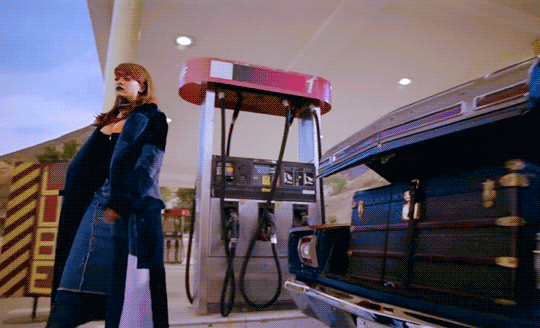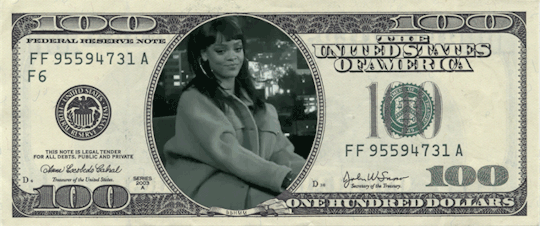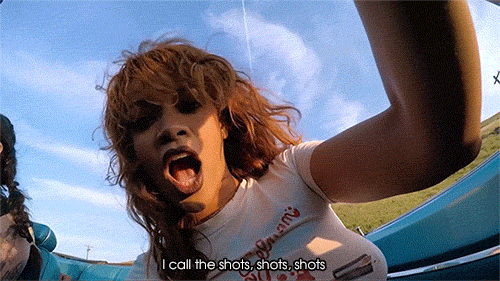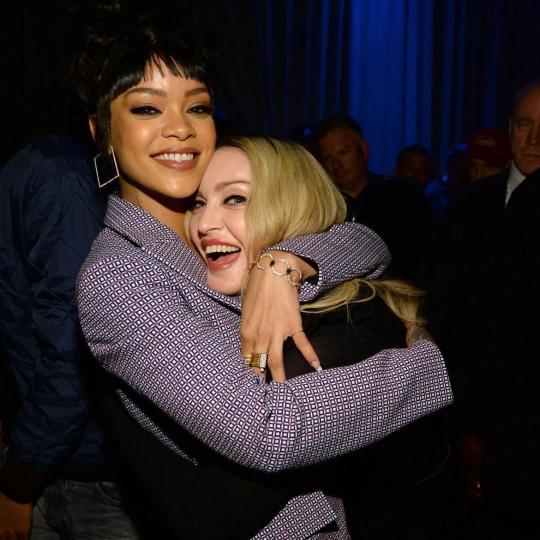#visualintroduction
Explore tagged Tumblr posts
Text
Ideology and Culturalism II: Pop Icons!

youtube
Rihanna’s music video for “Bitch Better Have My Money” reflects the inner workings of the culture industry through the ideology discussed within the workings of Adorno and Horkheimer. Firstly, to give a general overview of the music video and its role within the culture industry, Rihanna glorifies themes of wealth, power, and materialism–contributing to the ideas of commodification and dependency on economic value. The video begins with kidnapping the wife of a “wealthy” man, as the video progresses, we see Rihanna partaking in luxuries and borderline opulent activities while keeping the woman hostage. Money is at the very center of the music video, from driving a convertible (01:59-01:57), lounging on a yacht (02:48-03-27), to partaking in the usage of drugs and alcohol (03:58-04-26). Adorno and Horkheimer reveal the manipulations within the culture industry–the falsification of profitable “needs.” Adorno and Horkheimer argued that the culture industry manipulates individuals' desires and preferences, the music video profits off the societal desires for success through wealth indicators–reinforcing materialism under a capitalist framework.
This is an industry that idealizes consumerablity to value and gauge the necessity of a product which disturbs the artistic process of creation. All forms of art, from podcast to music video, are subject to the interests of money. While this prioritization of money is explicitly promoted in the lyrics of BBHMM, the song fits the standard mold of creation. There is a repetitive nature within the lyrics, art is then removed from the artist–it becomes a commodified product, transformed and designed for profit. The industry is solely concerned with making profits–this is directly linked to pop culture and everything in between.

Rihanna, herself, is a pop culture icon that is subject to the means of a mass capitalist consumerist mindset displaced within the music industry. She reflects the timely trends of the time, we can see this through the musical style of the backing track and the stylized outfits from 8 years ago. Down to the makeup trends of a long and thick liner and the neutral but bold lip color, implementing the micro trends of 2015 to mold to what would reel in the masses. The standardized content to capture the interest of the masses to form to contribute to a homogeneous culture of values.

During the process of encoding and decoding, the viewing audience may have varying interpretations of the music video based on their personal experience and background. Some may see the video as a form for women empowerment, the breakdown a male-dominate industry. Rihanna taking control and asserting herself as a force to be reckoned with. Or, others can see this as the glorification of violence as a means of retaining wealth and power. This ties into the commodified rebellion aspect of the culture industry. We as an audience interpret and decode Rihanna as a powerful figure, empowering women for the sake of feminism, but at the same time she is primarily making profit from our sentiment, rather than directly advocating for women.
youtube
"Bitch I’m Madonna", coming out the same year as BBHMM, functions in a similar manner to Rihanna’s work. Both pop star icons, which directly support Adorno and Horkheimer’s beliefs on the culture industry, have been molded into marketable products for mass consumption by the culture industry. The name “Madonna” has become a brand itself, which is apparent in the name of the song! Her image is enhanced through her commercial appeal as a global and legendary celebrity. She also incorporates cameos from different house-hold name celebrities (02:00-02:28) like Beyonce, Kanye, Katy Perry, and Miley Cyrus–highlighting the interconnectedness of fame and strengthening the celebrity culture. Keeping it in the circle, literally, supports the capitalist notions of social status, a notion that Adorno and Horkheimer challenge in their work.
Based on the way the music video was filmed, Madonna features an excess of wealth and luxury through a party-like concept, and is constantly surrounded by glamorous clothing and accessories. By barely having any cuts, almost a one shot, and Madonna as the focal point, the music video carefully crafts a branded image where success is measured by the individual’s own ability to make a name for themselves–promoting a culture of consumption. The flashy visuals, bright colors, and the strong and visually appealing choreography conforms to the ideas found within the culture industry and its expectations of a formulaic, mainstream media piece.

Madonna received a lot of negative criticisms and feedback when premiering her music video back in 2015. The public reception consisted of a lot of people suggesting that Madonna was clawing to stay “relevant” at this time by displaying acts that are typically done by younger folk. Tying this to Stuart Hall’s findings of encoding and decoding, a viewer may receive a message of excessive narcissism within the world of Madonna. In correspondence to Hall’s ideas on oppositional reading, Madonna encodes the music video with her vibrancy and energy, showcasing empowerment for an older generation, but through decoding the message, one might suggest that the focus on materialism is detrimental to the career of the icon. The dynamic nature of decoding supports Stuart Hall's theory, emphasizing the active role of the audience in making meaning from media texts.

Both iconic women showcase their adaptation to cultural trends of the era in media; due to both celebrities being subject to the culture industry, the use of conformity is a characteristic of the mass production of cultural products–this is also applied to the standardized format commonly found in the music industry that can diminish the artistic integrity found in the careers of both Rihanna and Madonna. Through the use of iconography, an audience may decode both artists’ expressions in the context of social frameworks.
Based on the conceptualization of the culture industry, are there aspects of pop culture that do not fall under the commodification of art?
How does the interplay between the sound and visuals of both Madonna’s “Bitch I’m Madonna” and Rihanna’s “Bitch Better Have My Money” challenge or support each other? How may that influence the process of decoding the messages from the artist?
In what ways is Madonna and Rihanna presented as a marketable commodity in her music videos from now and before, and how does this reflect the commercialization of art discussed by Adorno and Horkheimer’s “The Culture Industry as Mass Deception?
Max Horkheimer and Theodor Adorno, “The Culture Industry: Enlightenment as Mass Deception,” in Dialectic of Enlightenment (California: Stanford University press, 2002)
Stuart Hall, “Encoding, Decoding,” in The Cultural Studies Reader (London: Routledge, 1993)
14 notes
·
View notes
Text
@theuncannyprofessoro
14 notes
·
View notes
Text
Intro Vid
16 notes
·
View notes
Text
my visual introduction for class
15 notes
·
View notes
Text
@theuncannyprofessoro
10 notes
·
View notes
Text
@theuncannyprofessoro
10 notes
·
View notes
Text
@theuncannyprofessoro
15 notes
·
View notes
Text
heyyy here's my visual introduction!! @theuncannyprofessoro
16 notes
·
View notes
Text
@theuncannyprofessoro
15 notes
·
View notes
Text
@theuncannyprofessoro
15 notes
·
View notes
Text
@theuncannyprofessoro
15 notes
·
View notes
Text
:33
8 notes
·
View notes
Text
@theuncannyprofessoro
11 notes
·
View notes
Text
15 notes
·
View notes
Text
#oxyvisualanalysis #visualintroduction
@theuncannyprofessoro
5 notes
·
View notes
Text
@theuncannyprofessoro
5 notes
·
View notes